The Cancer constellation can be observed in the northern hemisphere. The best period for observations is from January to February. This is the most inconspicuous of the zodiac constellations. The easiest way to find it is to find the constellations Leo and Gemini in the sky on a clear night. Between them, you will find Cancer. However, there are no bright stars in it. Although the constellation is called Cancer, nevertheless, on the star maps of different nationalities it is depicted more like a crab.
How can you see Cancer constellation in the sky? In large cities, because of the glare and dust, it is not so well visible, so animations and an image are prepared for you outside the city, in the mountains and if you look at it in space, from orbit.
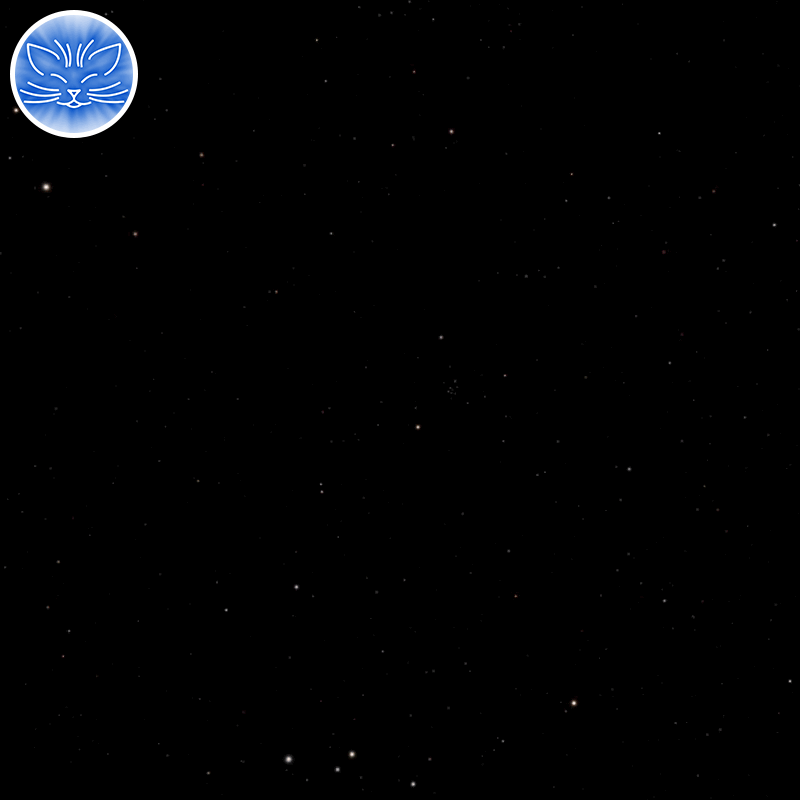
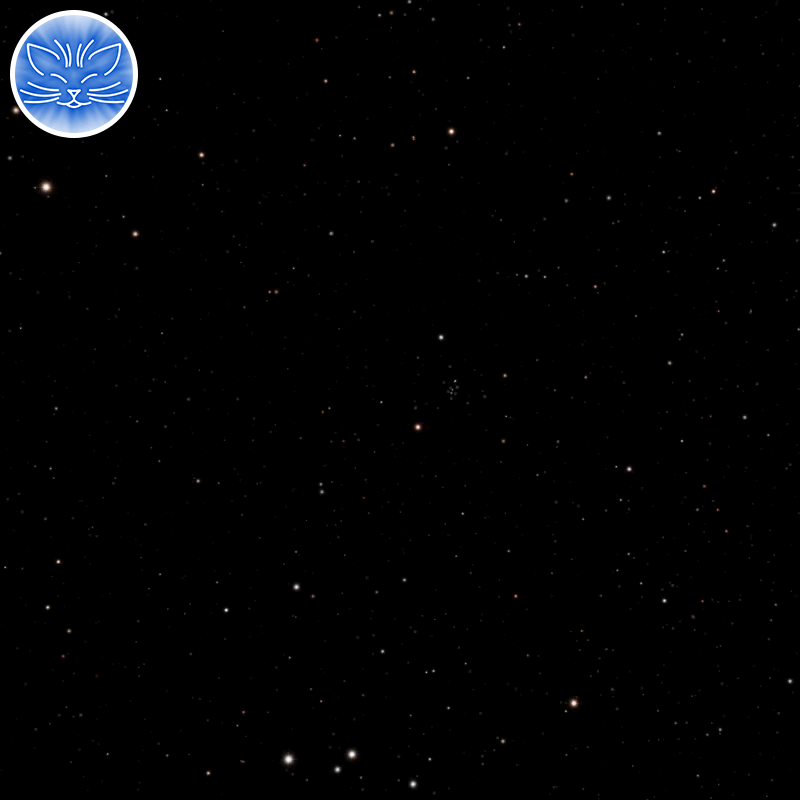

The brightest star of the constellation is Tarf (β Cancer), the tip of the leg. It is a binary star with an apparent magnitude of 3.53 and is 290 light-years away from us. Acubens (α Cancer) is a claw, a double star located 174 light–years away from us and with an apparent magnitude of 4.3. Tegmine (ζ Cancer) is the rear part, a multiple star, 83 light-years away from us. The apparent magnitude is 4.67. Thus, it can be observed with the naked eye. Ancient people considered it to be solitary and unremarkable. In 1656, Tobias Mayer discovered the second component. Since 1781, after the observations of William Herschel, the star has been considered triple. Currently, it is known that it consists of five components. The presence of the sixth component has not been confirmed at the moment. An interesting fact is that two of its components rotate with an orbital period of about 60 years, and the third orbits this pair with a period of 1150 years.
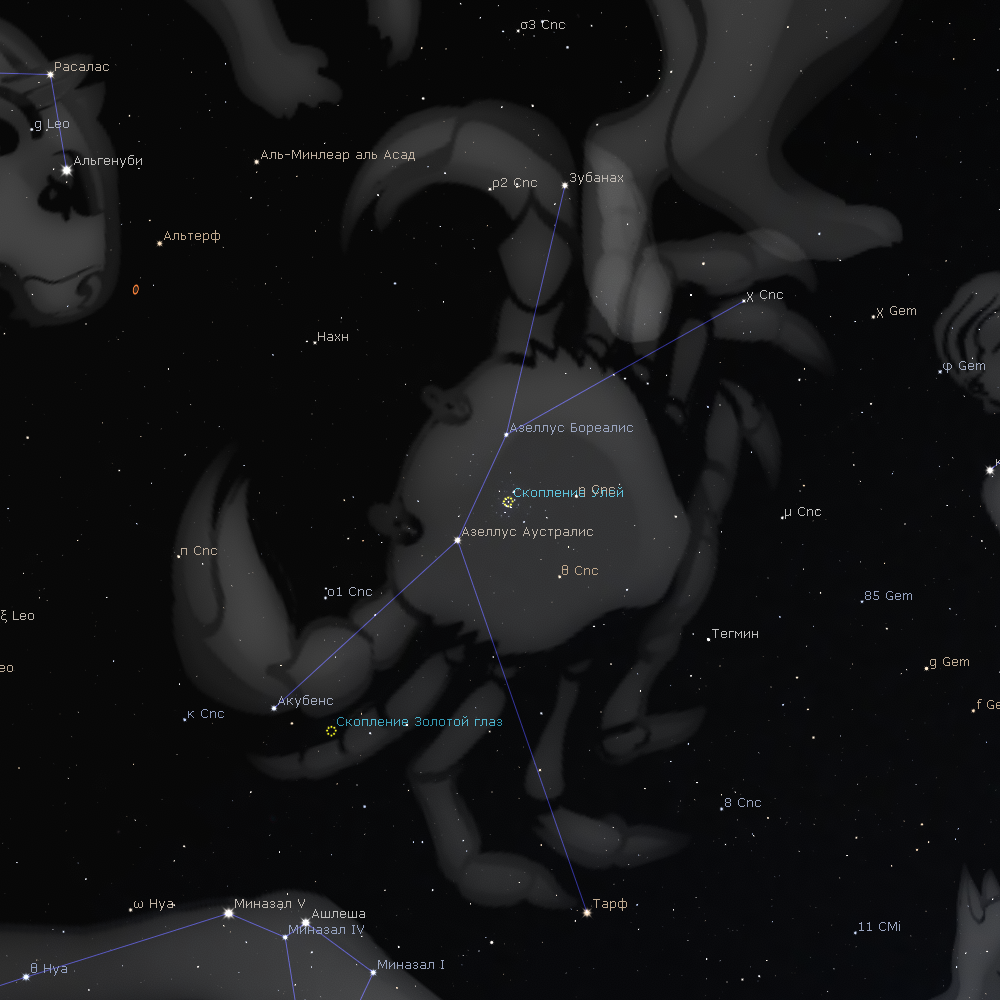
There is a well-known asterism of Donkeys and Manger in the constellation. The stars are Asellus Australis (δ Cancer) and Asellus Borealis (γ Cancer). These are some of the brightest stars in the vast but faint constellation. Asellus Australis (δ Cancer) is a southern donkey, a binary star with an apparent magnitude of 3.94 and 136 light–years away from us. Asellus Borealis (γ Cancer) is a northern donkey, a triple star with an apparent magnitude of 4.66 and distant from us at a distance of 158 light years. A nebulous speck (Manger) can be distinguished between the Donkeys and slightly to the right. This is the scattered star cluster Beehive (M 44).
The ancient writer Pliny has a mention of this zodiac constellation: “In the sign of Cancer there are two small stars called Donkeys, and among them there is a small cloud called a Manger.” The flight of imagination of ancient people attributed to the heavenly Donkeys quite an earthly appetite – it was widely believed that sometimes the Donkeys were fed from the heavenly Manger. They were also used to determine the weather, and the ancient poet Aratus wrote the following lines:
A murky Manger with both stars Shining unaltered is a sign of rain. If while the northern Donkey is dimmed By vaporous shroud, he of the south gleam radiant, Expect a south wind. The vaporous shroud and radiance Exchanging stars harbinger Boreas.
You can try to use this advice, and perhaps you will be able to predict rain more accurately than well-known weather forecasting sites.
Other interesting objects of Cancer constellation
In addition to the stars, other interesting objects can be observed in this constellation. The most interesting of them are two scattered clusters – M 44 and M 67.
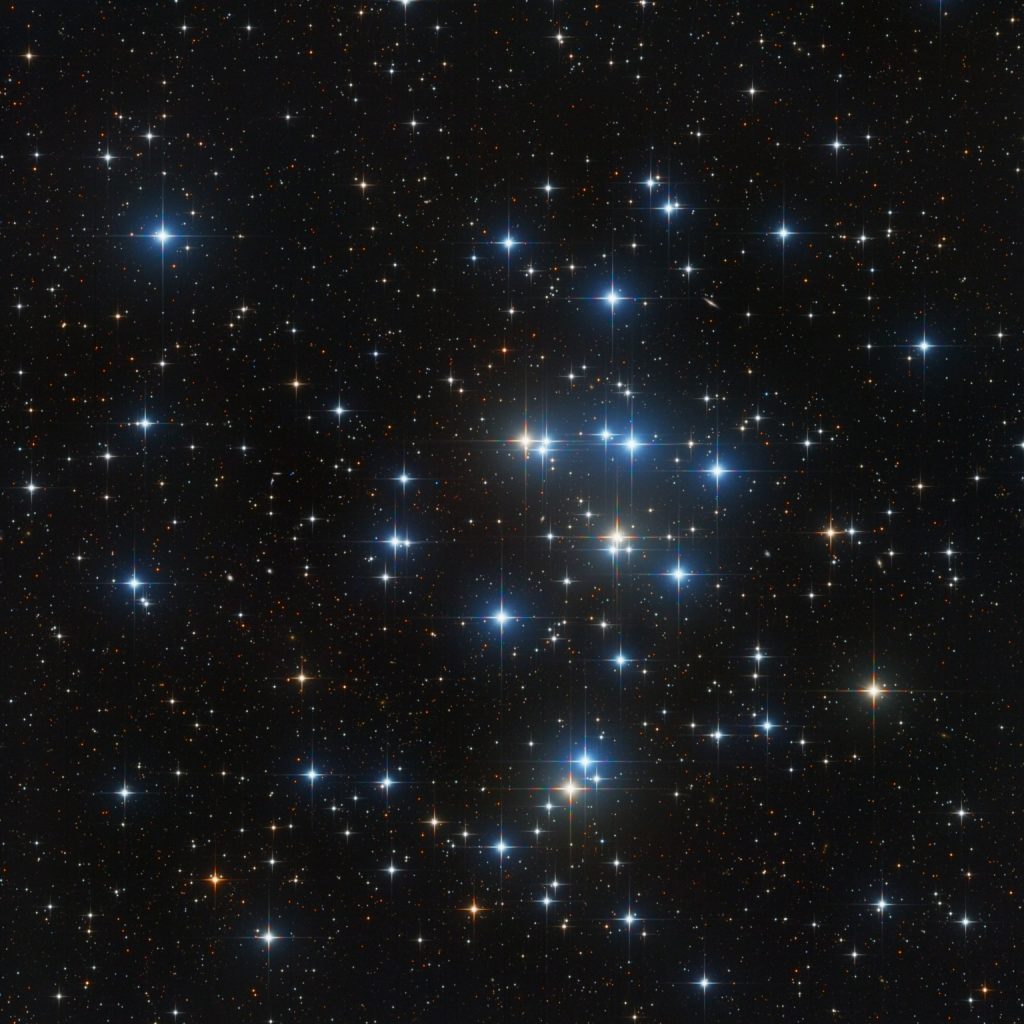
M 44 is the above–mentioned scattered star cluster called a Beehive. Its second and much less popular name is the Manger. This is one of the closest star clusters to us. The distance to it is 550–600 light-years, and the apparent magnitude is 3.7. Presumably, it has a common origin with the Hyades. On a clear night, it can be observed with the naked eye. But it should be noted that even the brightest stars of the cluster (their magnitude range is from 6.3 to 14) are actually quite dim and the cluster itself was perceived for a long time as a round nebulous cloud or star. However, Galileo Galilei managed to figure out that this is not a nebulous star. He discovered more than 40 stars in his telescope. Currently, at least six exoplanets have been discovered in the Beehive. Moreover, of all the famous ones, they are among the youngest. As mentioned above, it is easiest to find it between the two ‘Donkeys’ and a little to the right.
Another cluster, M 67, is one of the oldest scattered star clusters closest to us. It is also called the Golden Eye Cluster or the King Cobra Cluster. It is 2500–2700 light-years away from us, and its apparent magnitude is 6.1. The stars included in it are also dim in the sky – their range of magnitude is from 10 to 16. Only the most sharp-sighted people can see this cluster with the naked eye. It is located below the asterism we already know and a little to the left, next to the star Acubens (alpha Cancer).The cluster is quite large: it occupies the area of the full moon in the sky. Both clusters (M 44 and M 67) are definitely better to observe with a telescope or binoculars.
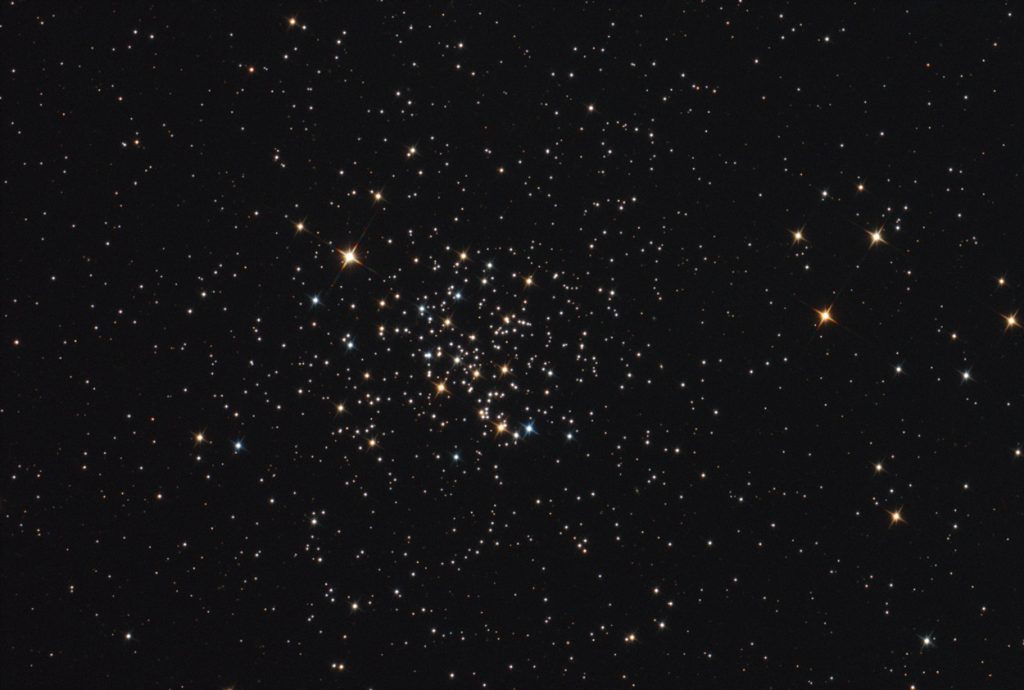
Mythology of Cancer Constellation
The Cancer constellation has a three-letter abbreviation of Cnc. It is not the most noticeable and not very large – the 31st largest of all 88 constellations, and one of the oldest. At the time of Ptolemy, it was included in the catalog of the starry sky (there were 48 constellations in total). About two thousand years ago, the summer solstice point was in the constellation of Cancer, as a result of which the Northern tropic of the Earth is called the tropic of Cancer.
According to Greek legend, in order to accomplish his second feat, Hercules had to defeat the Lernaean Hydra. It was a terrible monster that was nurtured by the goddess Hera herself. The Hydra had many heads, one of which was immortal. The monster brought ruin and destruction to all living things. It was extremely difficult for Hercules to fight the Hydra: after all, instead of a severed head, several new ones grew up. To help Hydra, a huge cancer Karkinos climbed out of the swamp and grabbed the hero by the leg. For which he was immediately crushed by his foot. With the help of his faithful friend Iolaus, who burned the severed heads, Hercules still defeated the Hydra. Hera, who hated Hercules, turned cancer into a constellation in gratitude. In addition, it was believed that the stars δ and γ Cancer, the so-called ‘Donkeys’, and the Beehive (Manger) nebula were placed in the sky by Dionysus, whose sacred animals were donkeys.
Have you seen this constellation? Have its objects been observed through binoculars or a telescope? What is your favorite constellation? Share your impressions in the comments.




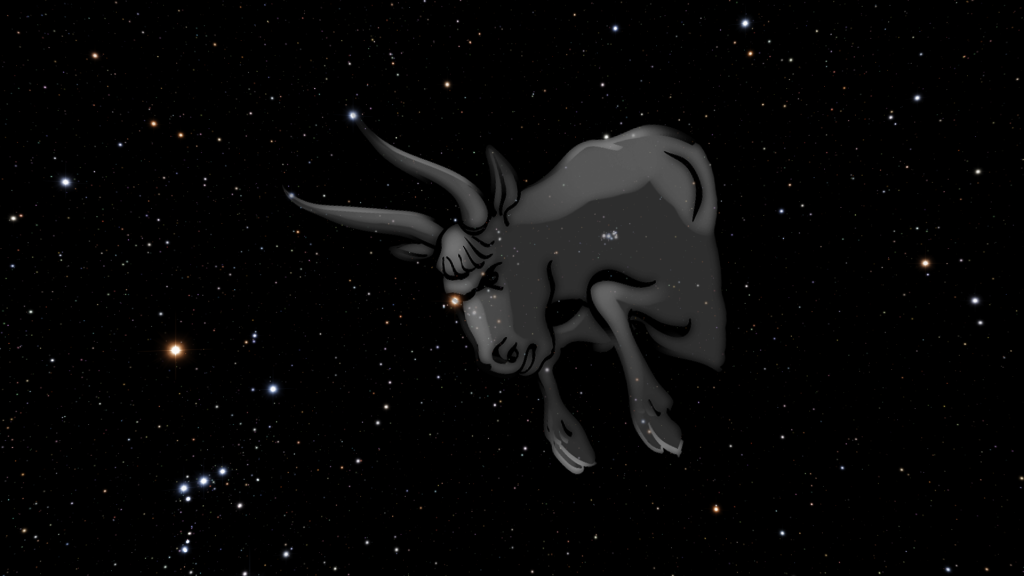

Thank you. Living in southern hemisphere, I have imaged several of the clusters and nebulae in my skies. You have reminded me that I should image M44 and M67. Many of my colleagues have done so. Perhaps Cancer being a bit low over the roof of my house (I have a small observatory so cannot easily move my pier-mounted scope), the other problem is that we are still in our summer season during which 80% of the evenings have some or a lot of clouds and we get thunderstorms too. Winter is better for cloud-free nights. I guess that you are far north?
Thank you for the comment. Yes, I live in the Northern Hemisphere, at latitude 53 degrees. In addition to visualizations, I try to write text articles. Unfortunately, they are not adapted for the inhabitants of the Southern Hemisphere. Most likely, I will do the adaptation when I have more articles about constellations. My life has always been closely connected with astronomy, although this science has nothing to do with my main job. Despite my fascination with astronomy, I hardly make any observations. All I have are binoculars and a small primitive telescope. You can imagine, I just observed Mercury for the first time tonight! However, I never saw it with my naked eye. Finally, I was able to see it through binoculars.